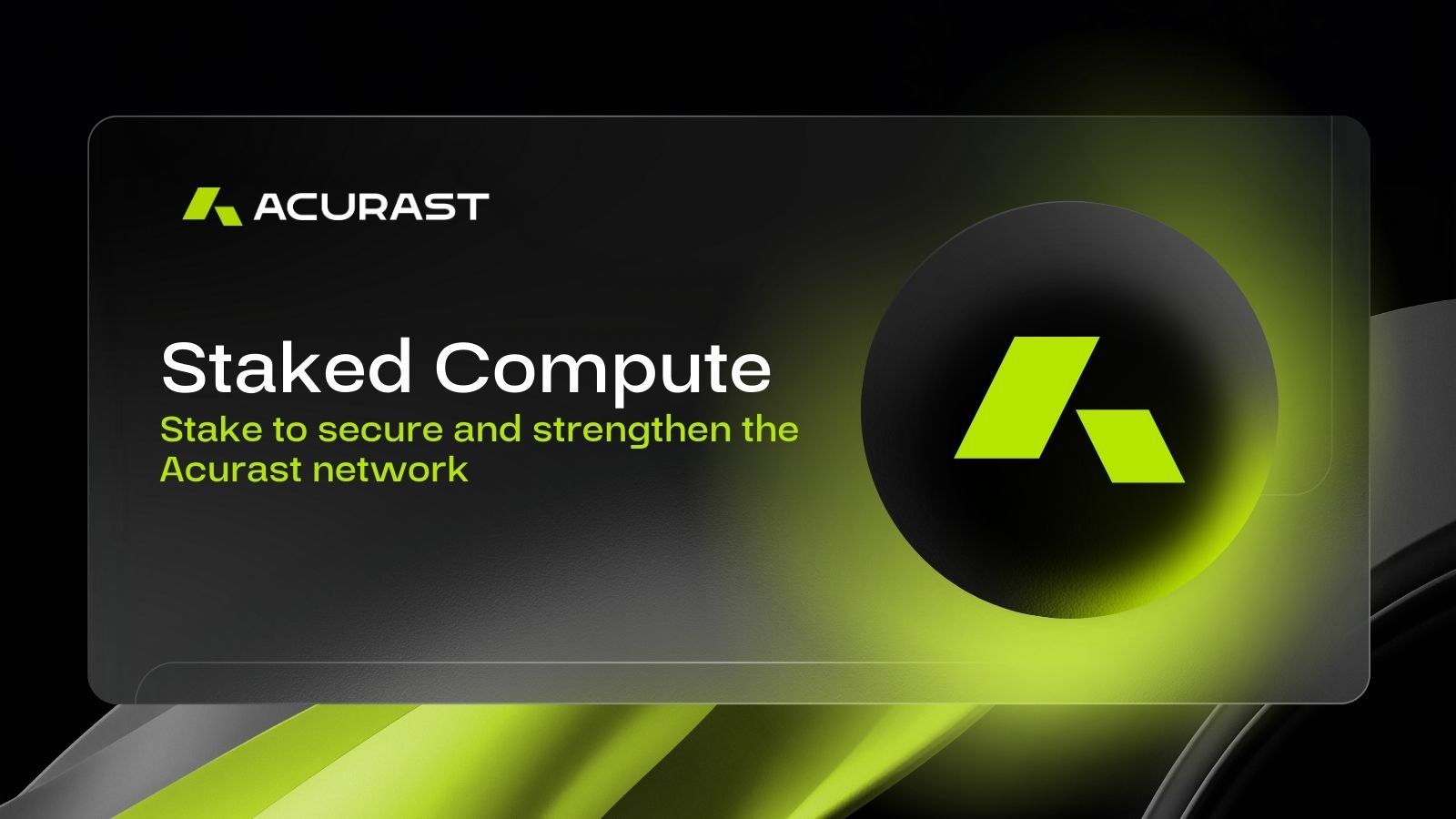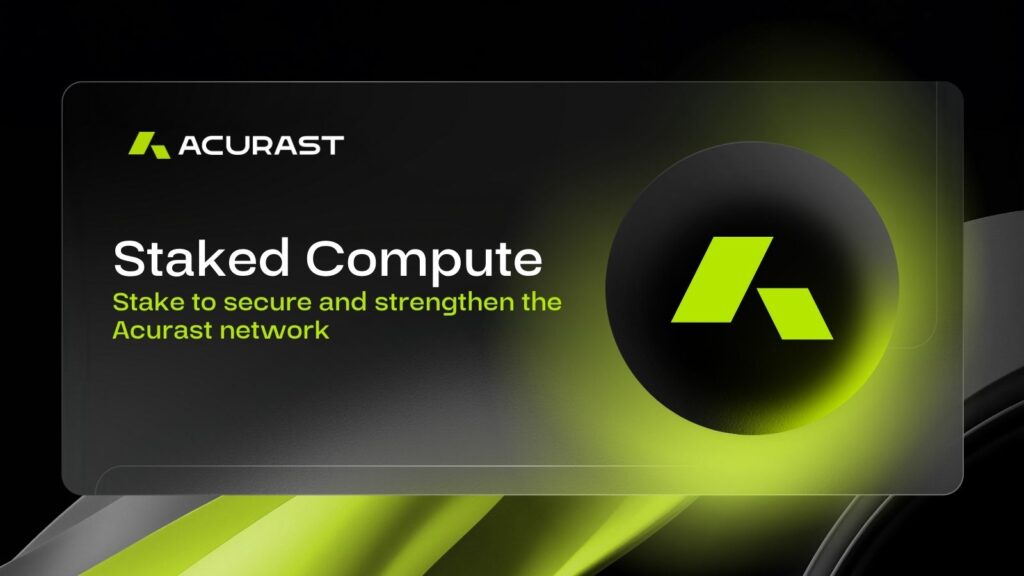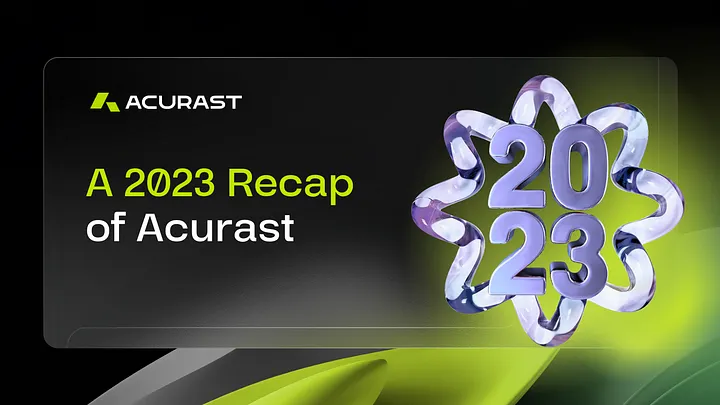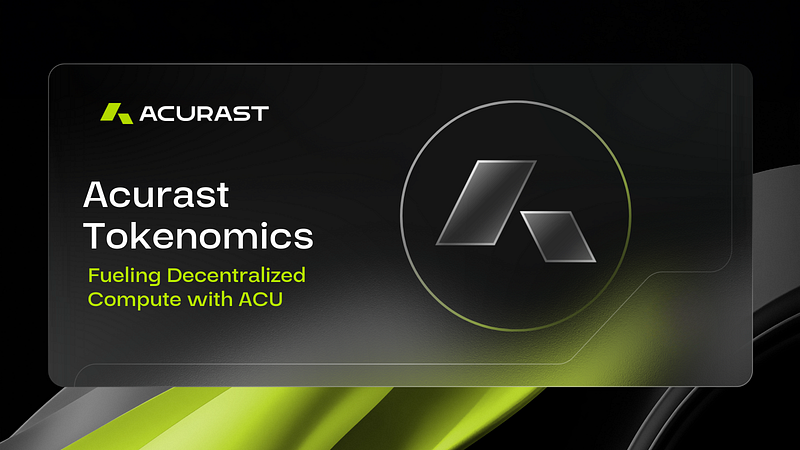
Staked Compute: How Your Stake Secures and Strengthens the Acurast Network

Staked Compute aligns incentives by letting providers commit hardware and stake tokens, with delegators backing them – to secure a more reliable network.
We’re excited to share with you some insights about the upcoming Staked Compute system. Staking on Acurast is one of the central incentive mechanisms to keep up a reliable network. The following article highlights how it works. Some details might be subject to change, please consult the latest documentation if you decide to stake.
Why Staked Compute?
Acurast is the most accessible global decentralized compute network, where anyone can contribute compute power by running the Acurast processor app on dedicated (Core) or personal phones (Lite).
While security in the Acurast network is ensured by leveraging the Hardware Security Module of the smartphones, this does not cover the requirement of liveliness. Liveliness of the provided compute can only be ensured by applying a crypto economic incentive system, which rewards reliability and punishes lack thereof. With staked compute the Acurast network ensures that provided compute is consistently available and overall capacity does not degrade. In short, liveliness of participating phones is key for a reliable and powerful Acurast network.
That’s where Staked Compute comes in as an incentive mechanism: providers commit to be supplying a certain amount of computation for a specified amount of time in the future and put Acurast tokens at stake. They get rewarded for fulfilling their commitment but punished if they fail.
A commit is a promise: providers promise to deliver a certain amount of compute and to keep it alive 24/7 for a chosen duration. This promise is backed with an amount of Acurast tokens, the stake. If the providers fulfill their promise, they earn staking rewards based on the factors (compute, duration, stake size) they selected when committing. If they fail, they risk being punished (slashed) and losing part of their staked tokens. This mechanism incentivizes providers to take care of their deployed Acurast phones and farms, ensuring they are always up and running and replacing capacity with equally powerful devices if some phones are shut down or removed from service.
As the general commitment of compute aligns well with the general commitment to the mission of the Acurast protocol in a later phase, stakers of the Acurast token are also able to participate in the governance process. Stakes will then correspond to votes in the Acurast DAO.
Where the rewards come from
Acurast inflates its token supply every year. That inflation is split:
70% → Staked Compute Pool
15% → Treasury
10% → Compute Pool (for onboarding new devices)
5% → Acurast blockchain block producers (Collators aka Validators)
Since most of the network’s inflation is paid to those participating in the Staked Compute pool, staking is one of the central elements of Acurast’s incentive design to ensure growth and liveliness.
Who can participate?
There are two types of participants:
Committers
They run the actual hardware — smartphones — to provide compute and ensure the network’s liveliness. They earn rewards from successfully executed code deployments on their devices.
Committers stake their own tokens as collateral for the promised computation and earn rewards depending on chosen staking parameters. They can also accept delegations from other Acurast token holders and earn a fee from these additionally staked tokens. If they cannot fulfill their promise on the committed computation power, they can be slashed.
Delegators
Delegators are users who do not have hardware actively participating in the network but who hold Acurast tokens. They believe Acurast is creating value and want to support the network long term. These users can delegate their tokens (and their voting rights) to committers of their choosing. By staking, they participate in the success of the chosen committer and earn rewards (minus the committer’s fee). They can also get slashed if the committer fails to deliver, but they can redelegate to another committer at any time. Delegators can also be Committers and delegate to themselves, for example if they want to create stakes with different cooldown periods.
How rewards are calculated
Rewards flow through several layers:
Inflation → Pools
Each epoch (~28 days), 70% of inflation goes to the Staked Compute Pool. These tokens are created by block producers and minted directly into the pool.
Pool → Committers
The share of rewards each committer gets depends on the following factors, which can be chosen or influenced by the committer:
Weight = benchmark_score * stake_amount * commit_time`
In short: stronger hardware, bigger stake, longer commitment = bigger rewards.
Committers can select how much of their compute they stake. They also choose how many tokens they stake alongside and how long a cooldown period should last once they trigger an unstake.
Committer’s Share → Self vs. Delegators
A committer’s reward is split between their own stake and the total stake of their delegators. Committers can choose to take a share of the delegators’ rewards as compensation for keeping compute up and running over the long term.
Delegators Split
The remaining delegator rewards are split between all delegators of the same committer, according to each delegator’s stake weight. The following factors influence delegation rewards:
Rewards = stake_amount * commit_time – delegation fee – potential committer slashings
Slashing
If a committer fails to stay online (unscheduled downtime) or the provided compute is less than committed (e.g. because phones went offline and were not replaced), their stake is slashed.
The following applies:
– Slashing scales with how long a committer is below their promised computation power
– Committers can always replace faulty hardware and/or add more compute to their compute on the fly, this reduces the risk of slashing
– Scheduled maintenance doesn’t trigger slashing
– Delegators share the risk, because their funds are tied to the committer, but they can redelegate
– Slashed tokens go to the burn queue and will eventually be burned, decreasing the total supply and inflation
Restaking
Staked Compute is not “locked away.” The same stake also counts for on-chain governance and block producer nominations. This makes Acurast’s staking more efficient and simpler for users compared to protocols where tokens must be staked separately in different places.
Staking Lifecycle
Committer:
– Start staking: Committer chooses amount of computation, tokens, and cooldown length and creates a stake.
– While staking: Committers can add more tokens to the stake, increase duration and compute, and either compound or withdraw rewards.
– Exit staking: Committer starts cooldown, waits until it ends, and then the stake is unlocked for withdrawal. End of commitment.
Delegator:
– Start Staking: Delegators delegate their stake to one or several committers, choose the amount of tokens and cooldown time.
– While staking: Delegators can add more tokens, increase duration, compound or withdraw rewards. They can also redelegate their stake to a stronger committer as long as their stake time/amount is equal/same or longer/more.
– Exit staking: Delegator starts cooldown, waits until it ends, and then the stake is unlocked for withdrawal. End of delegation.
Reward Compounding
When creating a stake, committers and delegators can choose whether their staking rewards should be compounded (immediately staked again) or withdrawn. If they choose to withdraw, they are free to move the rewards or stake them again in order to compound. Compounding is simply not triggered automatically in this case.










